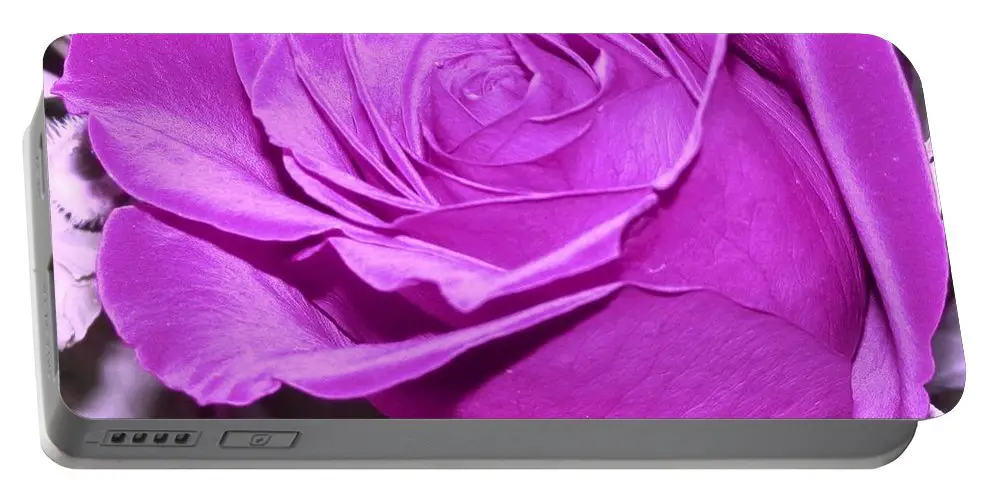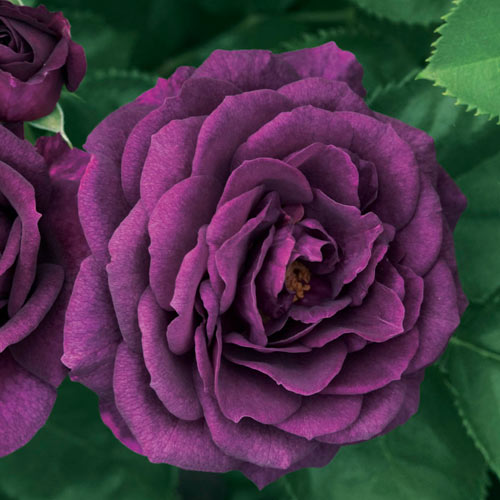Why Do Rose Petals Trun Purple

There are many factors that can cause rose petals to turn purple. One of the most common is a lack of sunlight. If the plant isn’t getting enough light, the leaves will begin to produce less chlorophyll, which gives them their green color.
This can cause the petals to appear purple or blue. Another reason rose petals may turn purple is due to stress. If the plant is under stress from too much heat, cold, or water, it may produce anthocyanins as a way to protect itself.
These pigments can make the petals appear purple or red.
Rose petals turning purple is a phenomenon that has been reported for centuries. The cause of this color change is not fully understood, but there are several theories. One theory suggests that the pigments in the petals are affected by changes in pH levels.
Another theory posits that the color change is caused by anthocyanin, a water-soluble pigment found in many flowers. Regardless of the cause, this color change is fascinating to behold!
Tree Rose grafting tips from a wild trunk #Shorts
What Causes Rose Petals to Turn Purple
The cause of purple rose petals is a lack of sunlight. The flowers need sunlight to produce the chlorophyll that gives them their green color. Without sunlight, the flowers can’t produce chlorophyll and the petals turn purple.
Is It Harmful to Roses If Their Petals Turn Purple
No, it is not harmful to roses if their petals turn purple. While the color may be unexpected, it is simply caused by a genetic mutation and does not indicate that the plant is unhealthy. In fact, many gardeners actually prefer purple-petaled roses for their unique appearance.
What Can Be Done to Prevent Rose Petals from Turning Purple
If you want to prevent your rose petals from turning purple, here are a few things you can do:
-Pick the roses when they are still relatively young. The older the rose, the more likely it is to turn purple.
-Make sure that you remove all of the leaves from the stem before putting them in water. Leaves release a gas called ethylene which can cause flowers to fade.
-Cut the stems at an angle and put them in warm water (around 100 degrees Fahrenheit).
This will help the flowers absorb water more easily.
-Add a quarter teaspoon of bleach per gallon of water. This will help keep bacteria from growing and will also act as a flower preservative.
Why Do Some Types of Roses Seem to Be More Prone to Having Their Petals Turn Purple Than Others
When roses are grown in high pH soils, the aluminum in the soil can be absorbed by the plant. This causes a reaction in the rose that turns its petals purple. The same thing can happen if you add too much aluminum sulfate to your soil when you’re trying to lower the pH. Some types of roses are more prone to this than others because of their genetic makeup.
Can Ducks Eat Purple Rose Petals?
Ducks and rose petals may seem like an unlikely combination, but it’s best to avoid feeding purple rose petals to ducks. While they are generally omnivorous, ducks have specific dietary requirements and consuming certain flowers may cause digestive issues. It’s important to prioritize the health and well-being of these delightful waterfowl by providing them with suitable food options.
Once a Rose’S Petals Have Turned Purple, is There Any Way to Reverse the Process
If you’re hoping to reverse the process of your rose’s petals turning purple, unfortunately there isn’t any guaranteed way to do so. While there are a few methods that may work for some roses, it’s ultimately up to the individual plant whether or not the petals will return to their original color.
One method that has been known to sometimes work is carefully removing the affected petals and placing them in a container of cool water overnight.
In the morning, check to see if the color has lightened at all – if so, repeat this process until you achieve desired results.
Another approach is to try spraying the purple petals with a mixture of water and white vinegar. Again, this isn’t a foolproof method but it’s worth a shot!
If you’re really set on getting your rose’s petals back to their original hue, your best bet may be to consult with a local florist or nursery. They likely have more experience with this issue and can offer guidance specific to your plant.

Credit: www.michiganbulb.com
Conclusion
When roses begin to wilt, their petals often turn purple. This is because as the flowers age, they lose chlorophyll – the green pigment that helps them produce food via photosynthesis. As the chlorophyll breaks down, other pigments in the rose petals become more visible, resulting in a change of color.
While some may find this discoloration unsightly, it’s actually a natural process that happens to all roses eventually.
